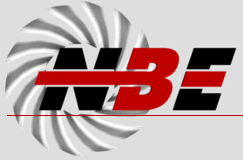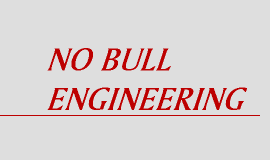PRACTICAL DESIGN AGAINST PUMP PULSATIONS
by
Mark A. Corbo, P.E.
President & Chief Engineer
No Bull Engineering
and
Charles F. Stearns
Engineering Consultant
No Bull Engineering
Originally presented at:
The 22nd International Pump Users Symposium
March 2005
One of the foremost concerns facing pump users today is that of pulsation problems in their piping systems and manifolds. In cases where a fluid excitation is coincident with both an acoustic resonance and a mechanical resonance of the piping system, large piping vibrations, noise, and failures of pipes and attachments can occur. Other problems that uncontrolled pulsations can generate include cavitation in the suction lines, valve failures, and degradation of pump hydraulic performance. The potential for problems greatly increases in multiple pump installations due to the higher energy levels, interaction between pumps, and more complex piping systems involved.
The aim of this tutorial is to provide users with a basic understanding of pulsations, which are simply pressure disturbances that travel through the fluid in a piping system at the speed of sound, their potential for generating problems, and acoustic analysis and, also, to provide tips for prevention of field problems.
Accordingly, the tutorial begins with a discussion of pulsations and why they are important in pumping systems. Since pulsation problems are almost always associated with the resonant excitation of acoustic natural frequencies, the fundamental concepts of acoustic natural frequencies, mode shapes, acoustic impedance, and resonance are described. For the many users who are familiar with mechanical systems, an analogy with mechanical natural frequencies is drawn and the basic acoustic elements of compliance, inertia, and resistance are compared to their mechanical equivalents (springs, masses, and dampers, respectively). Natural frequency equations and mode shapes are then given for the simplest piping systems, the quarter-wave stub and half-wave element. The dependence of acoustic natural frequencies on piping diameters, lengths, end conditions, and the local acoustic velocity (which, itself, is dependent on many parameters) is also discussed.
The three most common pulsation excitation sources in pumping systems are then described in detail. The first and probably best-known is the pumping elements, particularly those of positive displacement (reciprocating, gear, and vane) pumps. Although positive displacement pumps, and their characteristic pulsatile flows, are deservedly infamous in this area, pulsations at vane-passing frequency can also occur in centrifugal pumps, especially when running at off-design conditions and possessing positively-sloped head-flow characteristics. Second, excitations can arise due to vortex shedding arising at piping discontinuities such as tees and valves. Finally, transient excitations due to a sudden change in the piping system, such as the opening or closing of a valve, can lead to the so-called "water hammer" problems.
The tutorial then addresses the various pulsation control elements that are available and methods for sizing them and locating them within the system. Elements discussed in detail include surge volumes, accumulators (which include a gas-filled bladder to allow significant size reduction), acoustic filters (networks of acoustic volumes and resistance elements), and dissipative elements such as orifices. The advantages and disadvantages of each type, including the frequency ranges over which each are most effective, are discussed in detail. Emphasis is placed on proper location of these elements since a perfectly-sized element placed at the wrong point in the system can actually do more harm than good.
The tutorial concludes with a discussion of the elements that make up a good acoustic analysis computer code. Several examples of pumping system acoustic analyses that the authors have recently performed are also provided.
ORDER YOUR FREE COPY
BACK
| Home | Why Hire Us? | Services | Principals & Staff | Clients |
| Technical Papers | Short Courses | News Items | Contact Us |

